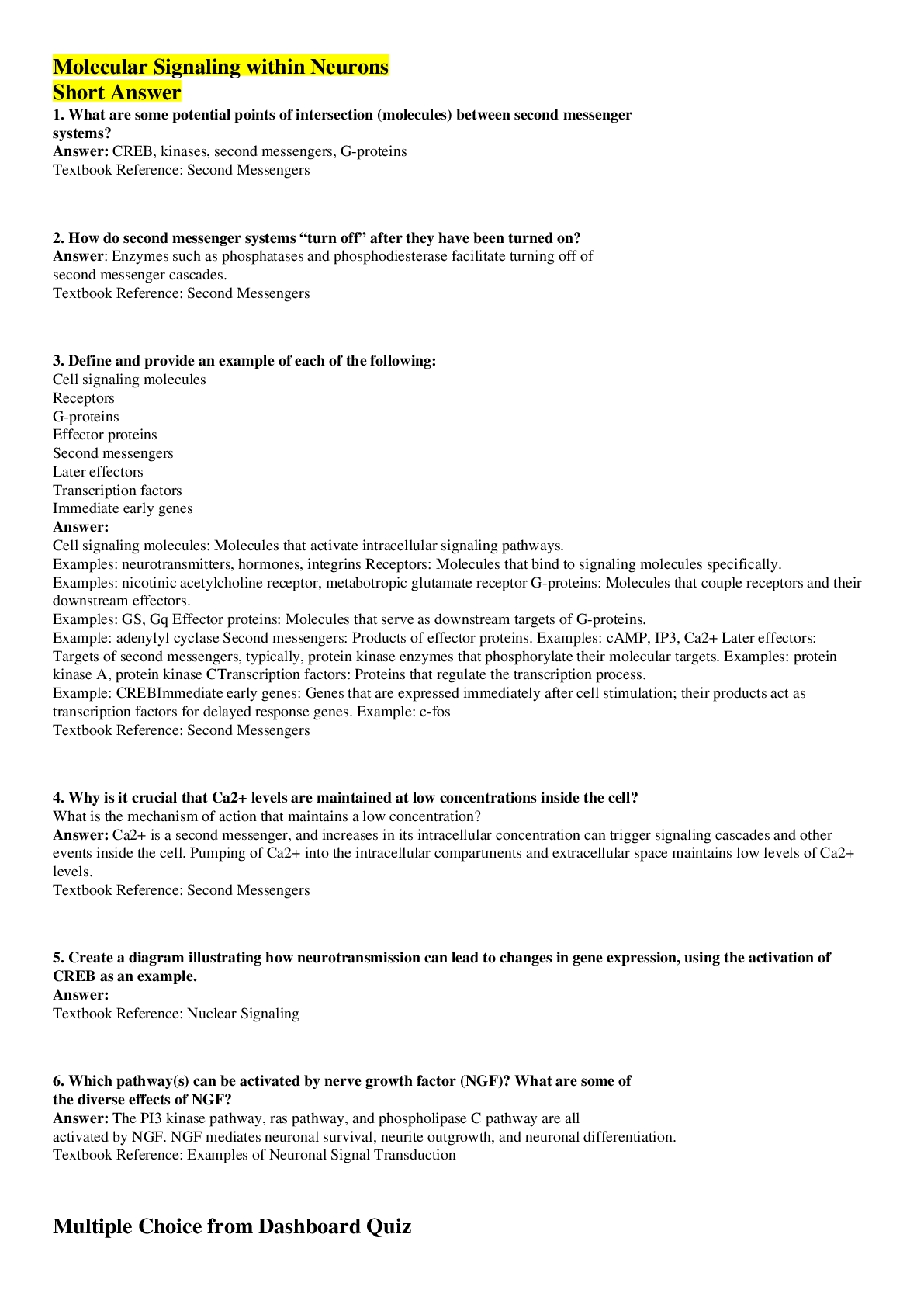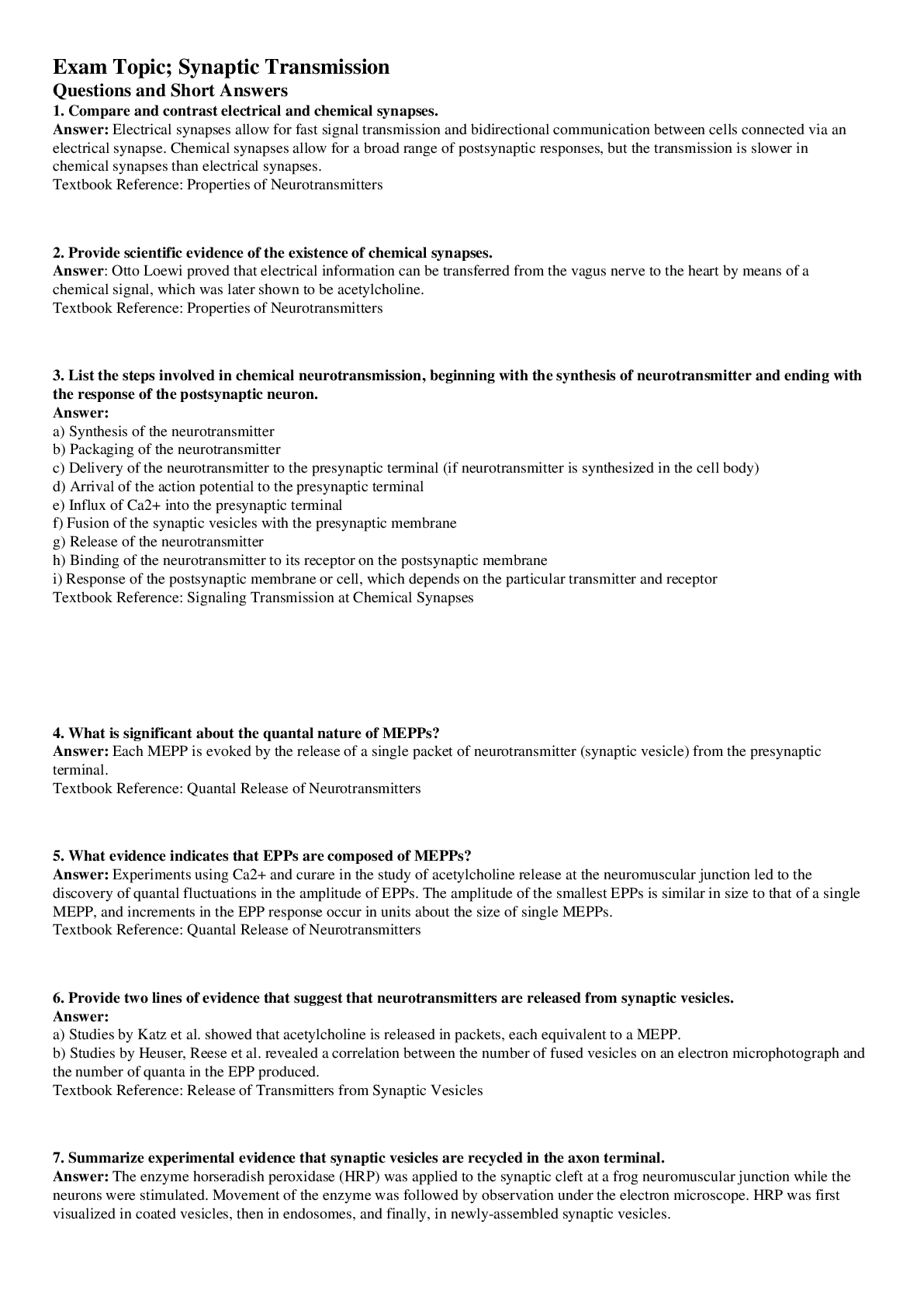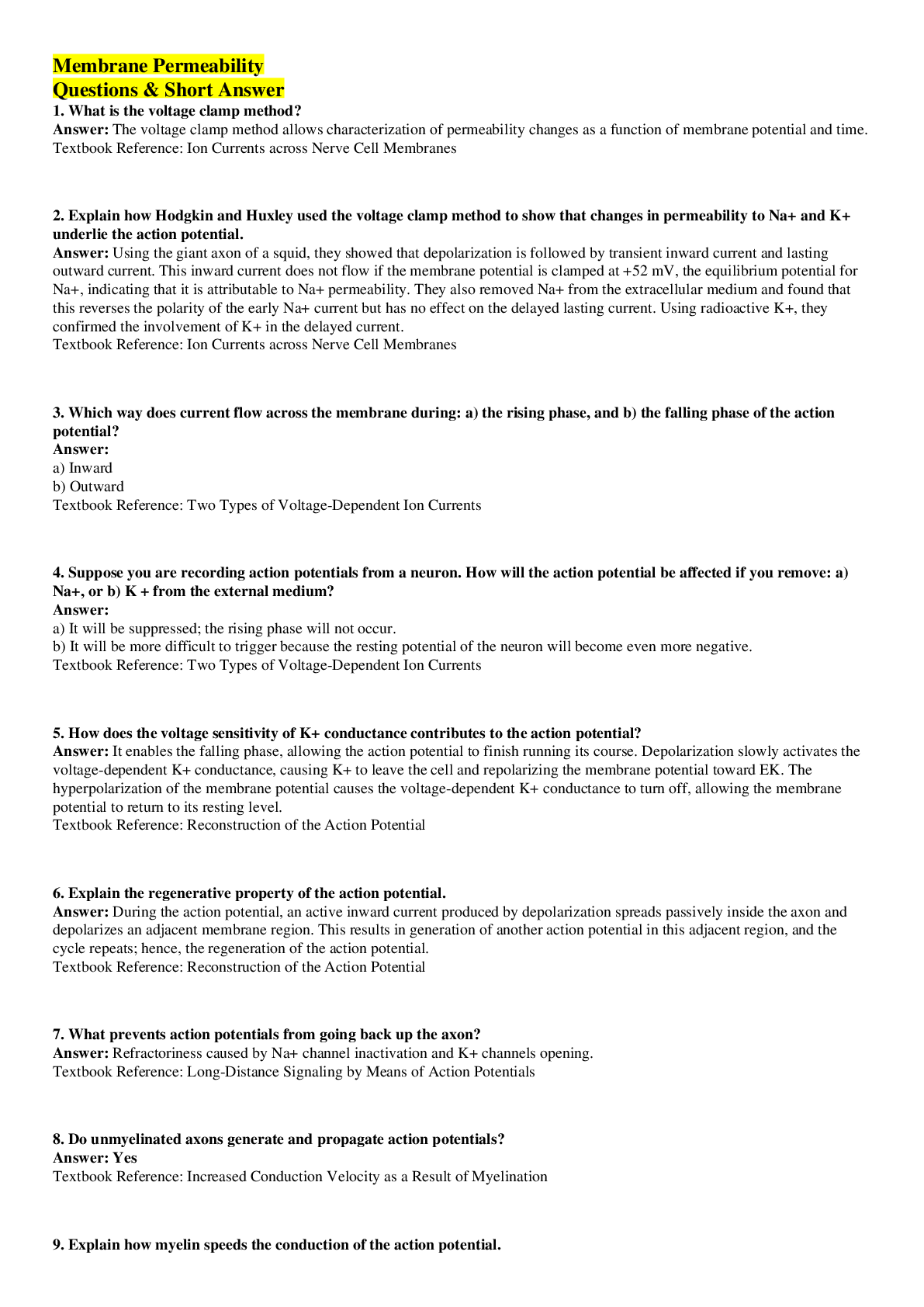Biology > ANSWERS AND COMMENTARIES > Neuroscience- Synaptic Transmission (All)
Neuroscience- Synaptic Transmission
Document Content and Description Below
Multiple Choice 1. Gap junctions may exhibit all of the following features except a. the ability to pass small metabolites, including some second messengers. b. the ability to pass electrical curr... ent bidirectionally. c. the ability to pass electrical current unidirectionally. d. the ability to amplify small incoming electrical signals into large regenerative potentials. e. the ability to synchronize the activity of populations of nerve cells. Answer: d Textbook Reference: Signaling Transmission at Electrical Synapses 2. The capability of a nerve terminal to rapidly and dramatically produce very large changes in calcium levels is most dependent on the a. presence of calcium-selective ion channels. b. enormous gradient of calcium across the membrane. c. fact that calcium is a positively charged ion. d. fact that calcium is a divalent cation. e. All of the above are essential for producing large, rapid concentration changes. Answer: b Textbook Reference: Signaling Transmission at Chemical Synapses 3. Listed below are the individual events that make up chemical synaptic transmission. 1. Diffusion of transmitter across the synaptic cleft 2. Depolarization of the presynaptic terminal 3. Vesicle fusion with plasma membrane 4. Opening of voltage-gated ion channels 5. Activation of presynaptic, calcium-sensitive proteins Which sequence represents the correct ordering of these events? a. 1; 2; 3; 4; 5 b. 2; 4; 5; 3; 1 c. 2; 5; 4; 3; 1 d. 5; 4; 2; 3; 1 e. 1; 2; 4; 5; 3 Answer: b Textbook Reference: Signaling Transmission at Chemical Synapses 4. Which characteristic is an accepted criterion for classifying a molecule as a neurotransmitter? a. It must be present in the presynaptic terminal. b. It must be released in response to presynaptic electrical activity. c. It must exert an effect on the postsynaptic cell. d. All of the above e. None of the above Answer: d Textbook Reference: Properties of Neurotransmitters 5. A scientist wishes to develop a new drug that prevents synaptic communication via neuropeptides but not small molecule neurotransmitters. Which mechanism would be a good target for his drug? a. Disruption of axonal transport b. Blocking of voltage-gated calcium channels c. Disruption of V-SNARES d. Blocking of voltage-gated sodium channels e. Increasing levels of synaptosome Answer: a Textbook Reference: Properties of Neurotransmitters 6. Miniature end plate potentials, or MEPPs, are produced a. at miniature end plates. b. by the smallest axons. c. in response to weak stimuli. d. by the smallest neurotransmitters. e. by spontaneous release of neurotransmitter. Answer: e Textbook Reference: Quantal Release of Neurotransmitters 7. To date, which observation is not part of the experimental evidence favoring thevesicular release hypothesis of neurotransmission? a. Fixed size of MEPPs b. Quantized distribution of events occurring at the neuromuscular junction c. Visualization of synaptic vesicles using electron microscopy d. Correspondence between a vesicle’s acetylcholine content and MEPP size e. Visualization of acetylcholine molecules diffusing out of the neck of the membranefused vesicle Answer: e Textbook Reference: Release of Transmitters from Synaptic Vesicles 8. The recycling of synaptic vesicles is tracked using HRP as a vesicle marker. What will be the observed sequence of HRP movement? a. Endosome, coated vesicle, vesicle reserve pool b. Vesicle reserve pool, coated vesicle, endosome c. Endosome, vesicle reserve pool, coated vesicle d. Coated vesicle, vesicle reserve pool, endosome e. Coated vesicle, endosome, vesicle reserve pool Answer: e Textbook Reference: Local Recycling of Synaptic Vesicles 9. Which observation would indicate a role for calcium in transmitter secretion? a. Observation of presynaptic depolarizing currents after blockade of sodium channels b. Voltage clamp experiments showing voltage-gated calcium channels in the presynaptic terminal c. Induction of transmitter release by injection of calcium into the presynaptic terminal d. Blockade of transmitter release by injection of calcium blocker into the presynaptic terminal e. All of the above Answer: e Textbook Reference: The Role of Calcium in Transmitter Secretion [Show More]
Last updated: 2 years ago
Preview 1 out of 4 pages

Buy this document to get the full access instantly
Instant Download Access after purchase
Buy NowInstant download
We Accept:

Reviews( 0 )
$4.50
Can't find what you want? Try our AI powered Search
Document information
Connected school, study & course
About the document
Uploaded On
Apr 28, 2022
Number of pages
4
Written in
Additional information
This document has been written for:
Uploaded
Apr 28, 2022
Downloads
0
Views
111

















